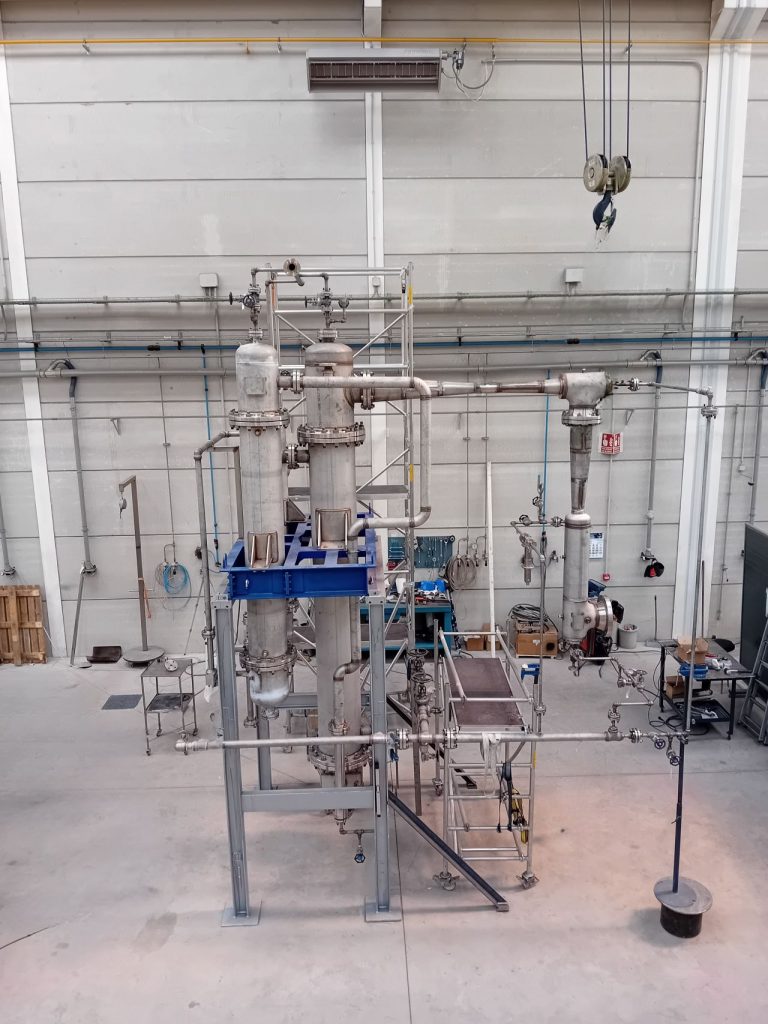Syngas Dehumidifier: Moisture Removal for Cleaner Syngas
A syngas dehumidifier removes water vapor from syngas (synthesis gas) produced from gasification, pyrolysis, or waste-to-energy processes. Dry syngas improves combustion efficiency, prevents corrosion, and meets quality standards for downstream applications (e.g., power generation, biofuels).
Why Dehumidify Syngas?
Raw syngas contains:
- H₂, CO (energy carriers)
- CO₂, CH₄ (byproducts)
- Moisture (H₂O) – Can condense, causing:
- Corrosion in pipelines & engines
- Reduced heating value
- Catalyst poisoning (e.g., in Fischer-Tropsch synthesis)
Types of Syngas Dehumidifiers
1. Refrigeration-Based Dehumidifiers
- How it works: Cools syngas below its dew point, condensing moisture.
- Best for: High-flow systems needing precise dew point control.
- Pros: Effective for bulk moisture removal.
- Cons: Energy-intensive; may require pre-filtration.
2. Desiccant (Adsorption) Dryers
- How it works: Uses silica gel, activated alumina, or molecular sieves to absorb moisture.
- Best for: Syngas requiring ultra-low humidity (e.g., chemical synthesis).
- Pros: Very dry output (<1% RH); handles variable loads.
- Cons: Desiccant needs periodic regeneration (heat/purge gas).
3. Membrane Dehumidifiers
- How it works: Selective membranes allow H₂O vapor to permeate, retaining dry syngas.
- Best for: Compact systems with moderate humidity.
- Pros: Low maintenance, no moving parts.
- Cons: Limited to low-pressure applications.
4. Cyclonic Separators + Condensation
- How it works: Combines centrifugal force (removes droplets) with cooling coils (condenses vapor).
- Best for: Small-scale or low-cost gasification systems.
- Pros: Passive, no consumables.
- Cons: Less precise than active systems.
Key Benefits
Design Considerations
- Flow Rate (Nm³/h) – Sizing the dehumidifier to match gas production.
- Dew Point Target – Depends on end use (e.g., <5°C for gas engines).
- Contaminant Tolerance – Tar, particulates, or H₂S may require pre-filtration.
- Material Selection – Stainless steel for corrosion resistance.
Applications
- Biomass Gasification – Clean syngas for CHP (combined heat & power).
- Waste-to-Energy – Moisture removal before syngas combustion.
- Fischer-Tropsch Fuels – Protects catalysts from steam deactivation.
- Hydrogen Production – Dry syngas improves H₂ purification.
Comparison with Biogas Dehumidifiers
| Feature | Syngas Dehumidifier | Biogas Dehumidifier |
| Gas Composition | H₂, CO, CO₂, CH₄ | CH₄, CO₂, H₂S |
| Moisture Load | Higher (from gasification) | Lower (digester gas) |
| Key Challenge | Tar/particulates clogging | H₂S corrosion |
| Common Methods | Refrigeration, desiccants | Chillers, adsorption |
Installation Tips
- Place after particulate/tar removal (e.g., scrubbers, filters).
- Use pre-cooling if syngas exits gasifier at high temps (>100°C).
- Monitor pressure drop to avoid flow restrictions.
